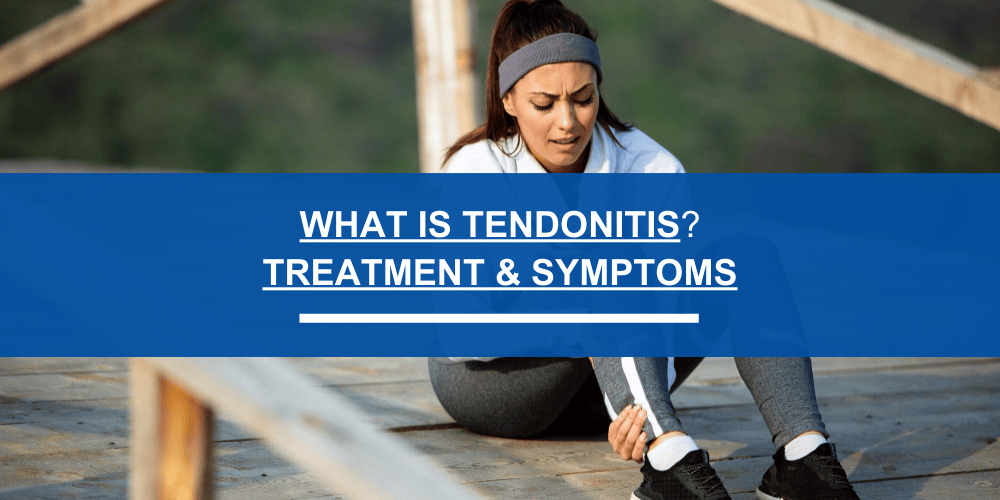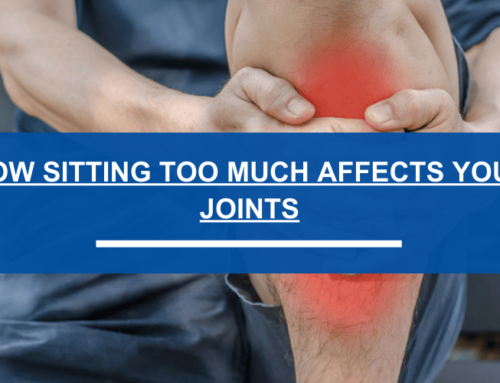Tendonitis is a painful condition involving inflammation or irritation of a tendon—the tough, flexible cord that connects muscle to bone. It’s a common issue among athletes, weekend warriors, and older adults whose tendons naturally weaken with age. But the good news? It’s highly treatable, especially when caught early.
What Causes Tendonitis?
Tendonitis typically develops from repetitive motion or overuse, especially during physical activity or daily work tasks. Poor posture, sudden increases in activity, and improper technique can all contribute to tendon stress.

Common Types of Tendonitis
- Achilles Tendonitis – Inflammation of the tendon connecting the calf muscles to the heel
- Tennis Elbow – Pain on the outer elbow from repetitive arm movements
- Rotator Cuff Tendonitis – Inflammation in the shoulder, often from overhead motion
- Patellar Tendonitis (Jumper’s Knee) – Pain just below the kneecap, common in runners and jumpers
Symptoms of Tendonitis
- Dull aching or tenderness near a joint
- Swelling or warmth in the affected area
- Pain that worsens with movement
- Stiffness, especially in the morning
Ignoring early signs can lead to chronic tendon damage or even tears, so prompt treatment is key.
Tendonitis Treatment Options
1. RICE Protocol
The RICE protocol—Rest, Ice, Compression, and Elevation—is a proven method for managing in its early stages. This approach helps reduce inflammation, relieve pain, and support the healing process. Avoid activities that aggravate the tendon, apply ice to reduce swelling, use a compression bandage if needed, and elevate the affected area whenever possible.
2. Physical Therapy and Stretching
A structured rehab plan can strengthen muscles, improve flexibility, and reduce stress on the tendon. Therapists may also use ultrasound or massage to speed healing.
3. Medications
Over-the-counter NSAIDs like ibuprofen can relieve pain and reduce swelling. In severe cases, corticosteroid injections may be recommended.
4. PRP Therapy
Platelet-Rich Plasma (PRP) therapy is gaining popularity for chronic tendonitis. It uses your own blood’s healing components to stimulate tissue repair, especially helpful when traditional treatments don’t provide relief.
The Bottom Line
Tendonitis can be frustrating, but with the right treatment plan, most people recover fully and return to their normal activities. Don’t ignore persistent joint pain—early diagnosis and care can prevent long-term complications.
Frequently Asked Questions
1. What is the main cause of tendonitis?
Tendonitis is usually caused by repetitive movement, overuse, or sudden increases in physical activity that strain a tendon.
2. How do I know if I have tendonitis or something more serious?
If you feel pain near a joint, swelling, or stiffness that worsens with use, it may be tendonitis. If symptoms persist or worsen, see a doctor to rule out a tear or rupture.
3. Can I still exercise with tendonitis?
It’s best to rest the affected area and follow your healthcare provider’s guidance. Low-impact exercises or physical therapy may help with recovery.
4. What is PRP therapy, and how does it help tendonitis?
PRP (Platelet-Rich Plasma) therapy uses your own blood to promote healing in inflamed tendons—especially useful in stubborn or chronic cases.








